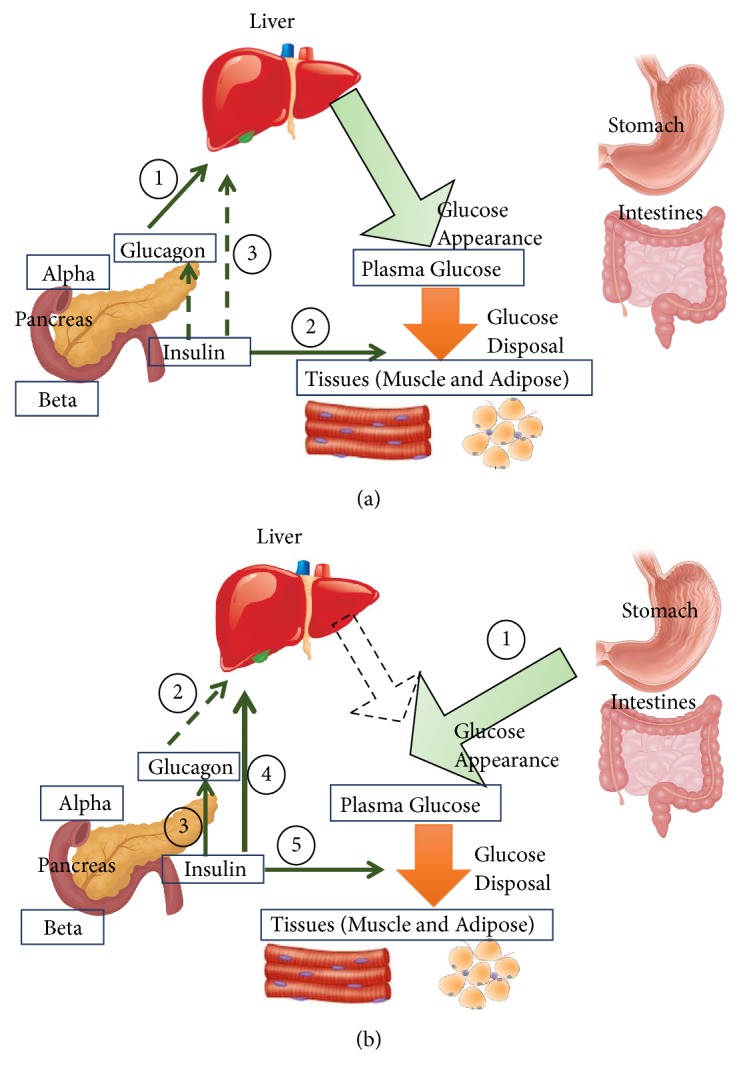Figure 2.

Glucose homeostasis: role of insulin and glucagon. In the fasting state (a), serum glucose is derived from glycogenolysis under the regulations of glucagon (1). Insulin controls glucose disposal at its basal levels (2). Since glucose levels are not high, low levels of insulin have minimal role in supressing glucose appearance in the serum (via glycogenolysis and gluconeogenesis) (3). In the fed state (b), glucose in the plasma is derived from nutrition “stomach and intestine” (1). Glucagon secretion and effect are supressed as a result of insulin secretion (2,3). Communication within the islet cells of the pancreas contributes to this inhibition. (4) As a result, gluconeogenesis and glycogenolysis are supressed in the liver. Glucose disposal is activated in peripheral organs (5) [15]. Figure 2 is reproduced from Saad et al. (2017) ([under the Creative Commons Attribution License/public domain)” [14].
